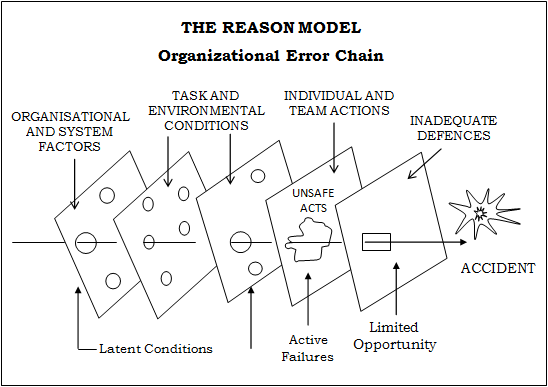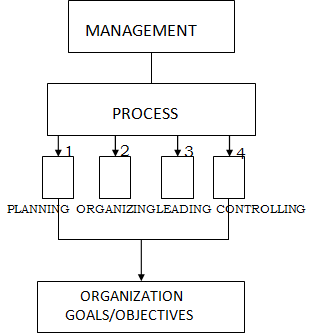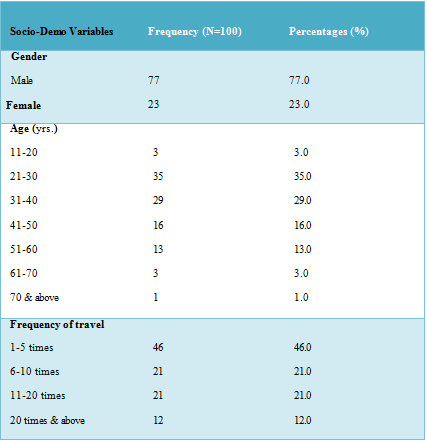DOMESTIC AIRLINE OPERATIONS AND MANAGEMENT IN NIGERIA (PROBLEMS AND PROSPECTS)
Abstract
For the first half of the twentieth century, rail and road transport were the only forms of vehicular transport in Nigeria that opened up new areas. However, since World War II, Nigeria has experienced another transport revolution in the introduction of an air transport system. Though air transport is the least important form of transport in Nigeria in terms of total traffic volume, it faces an expanding role in the nation’s continued socio-economic development.
In the light of the growing importance of air transport, and airlines, in particular, this research work will focus on its operational and management challenges… (Scroll down for the link to get the Complete Chapter One to Five Project Material)

INTRODUCTION
The history of air transport development in Nigeria is synonymous with that of Nigeria Airways (Filani 1986). Commercial Aviation began in Nigeria on May 15, 1946, with the West African Airways Corporation (WAAC). The WAAC disbanded in 1958, yielding its place to Nigeria Airways. The latter’s share capital of £5 million (N12 million) is divided into 60,000 shares of N200 each.
Though the airline is a limited liability company, the federal government owns all of the shares. The shareholders are, therefore, nominees of the government; the erstwhile Ministry of Aviation was government-appointed and had a representative on the airline board of directors… (Scroll down for the link to get the Complete Chapter One to Five Project Material)
Background of the Study
Assessment of future trends in aircraft movements and of passengers and freight traffic flows underpin the planning of aviation policies. Generally, the scale of air transport operations has changed out of all recognition since the signature of the Chicago convention at the end of 1944. Scheduled domestic and international air services carried 9 million passengers in 1945; in 1999 the number of passengers passed 1.5billion for the first time.
In fact, growth in passengers’ traffic has averaged about 10% annually, though the rate has slowed as the air transport market has become more mature, from the 20%plus recorded in the first ten postwar years to less than 5% in recent decades. The output of air transport has increased by a factor of thirty since 1960.
Although world gross domestic product (GDP), which is the broadest available measure of output, increased by a factor of only 3.8 over the same period, there is a strong correlation between the two measures. Statistical analyses have shown that growth in GDP, reflected in increasing commercial and business activity and increasing personal income and propensity to travel, account for about two-thirds of air travel growth.
Demand for airfreight service is also primarily a function of economic growth and international trade. Other economic and structural factors, which influence the rate of growth, include improved services, reductions in airline fares, business globalization and changes in population and income distribution…. (Scroll down for the link to get the Complete Chapter One to Five Project Material)
Statement of the Problem
The development of any nation be it developing or developed without mincing words is very great. Transportation plays an important role in the economic, social, and political life of every individual, group, society, or nation.
Therefore, its importance cannot be quantified. It contributes positively to the economic transformation in various forms ranging from employment opportunities to revenue generation, urbanization, trade, and commerce functions. Because of these fundamental roles performed by transport, there is a need to ensure that the sector continued to be sustained so as to enable its positive contribution to remain in addition to expose or relate such contribution to the societal needs from time to time.
It is this need to support economic growth and transformations that have led to the continuous development of air transport in general… (Scroll down for the link to get the Complete Chapter One to Five Project Material)
Research Objectives
The study aim at examining the characteristics and challenges of domestic airlines in Nigeria. In achieving this broad aim, the following objectives would be pursued:
(i) To examine the structure and management of domestic airlines in Nigeria
(ii) To appraise the challenges and prospects of domestic airlines in Nigeria… (Scroll down for the link to get the Complete Chapter One to Five Project Material)
REVIEW OF RELATED LITERATURE
Introduction
This chapter will review the relevant literature on the lapses in the aviation sector as well as the organization control system. The author intends to review the nature of organizations; system characteristics, and the functions of management in an organization, emphasizing the importance of systems control in organizations.
Since control is the major management function that is intended in this study, the author wishes to emphasize the idea of organizations as cybernetic systems and the relevant literature on organizations as cybernetic systems so that the variables to be studied will be presented.
Observed/Recorded Lapses in the Aviation Sector
Between what the aviation sector is and what it should be certain factors have been observed to have created the gap. These are:
- Safety and Security:
The maintenance of a safety culture in aviation is inevitable. Safety, culture, according to Eliff (1999:3) refers to a situation in an organization where each individual employee, regardless of position, assumes an active role (supported by the organization) in error prevention.
Emphasizing the essence of safety culture, Wiegmann et al. (2002:2) recognize that operators do not interact with technology in isolation, rather they function “as coordinated teams embedded within a particular organizational culture. Johnson et al (2006:30) argue forcibly that safety initiatives are required to help reduce the frequency of air accidents.
They suggest the approach whereby new cockpit technology can be utilized to enable pilots to avoid completely adverse weather or recover speedily from hazardous situations. Reason (1990:173) posits that the basic cause of air accidents is the fallible decisions made by designers and high-level managerial decision-makers. He identifies two types of errors; active errors (effects of which are felt in no distant time), and latent errors which linger for a long period, and present themselves sequel to the intervention of regulators, internal auditors or accidents, only when, they have acted with other factors to collapse a system’s defenses.
Active errors, according to him, are associated with the actions of air traffic controllers, pilots, and control room crews, while latent errors are linked with the actions of maintenance personnel, designers, and high-level decision-makers. Thus, these errors “pose the greatest threat to the safety of a complex system”. This is illustrated in the model below.

Fig. 2.1: The Reason Model
Source: Reason (1990) Human Error Cambridge University Press.
In his work, Westrum (2002:12) posits that most accidents are directly linked to bureaucratic failure. Some airline deliberately violates regulations and neglect problems that seem inimical to safety, while concentrating on protecting their territories and masking their ineffectiveness… (Scroll down for the link to get the Complete Chapter One to Five Project Material)
The Concept of Management
Resser (1973) cited in Dyikuk (2002:37) defines “management as the utilization of physical and human resources through cooperative efforts, accomplished by performing the functions of planning, organizing, staffing, directing and controlling”. This definition emphasizes the control of resources aimed at achieving the goals of an organization. Stoner et al. (2000:15) define management as the process of planning, organizing, leading and controlling the work of organization members and of using all available organizational resources to reach stated organizational goals. Here, management is perceived as a process, based on which four managerial processes have been identified. These include planning, organizing, leading, and controlling.

Fig. 2.10 Management as a Process Source: Authors own
Mintzberg (1973:55) posits that a process emphasizes that all managers, regardless of their particular aptitudes or skills, engage in certain interrelated activities in order to achieve organizational goals… (Scroll down for the link to get the Complete Chapter One to Five Project Material)
RESEARCH METHODOLOGY
Introduction
In assessing Nigeria‘s domestic aviation industry, there is the need to find suitable data upon which analysis will inform whatever conclusions and recommendations that are made. This study focuses on the domestic aviation sector in Nigeria but uses the entire domestic airline as a case study. The previous chapter served as a platform for discussing and reviewing existing literary works on the airline industry, with regards to its evolution, growth, operations, among others.
This chapter moves a step further by showing the ways in which the relevant data and its collection was carried. Briefly, this chapter discusses research tools employed and methods used in the data collection process. This discussion covers the Research design, approach and strategy, the types of data to be collected, the sources, population and sample size, data processing and analysis.
The chapter also highlights the profile of the case organization as well as the various airlines that operate at the Murtala Mohammed International Airport. This research process; data collection and analysis, sought to provide an overview of airport operations and management as well as the factors that militate against the growth of the domestic aviation sector in Nigeria… (Scroll down for the link to get the Complete Chapter One to Five Project Material)
RESEARCH FINDINGS AND DISCUSSION
Introduction
This chapter of the project work presents the findings of the study which are discussed based on the various objectives that define the study. In all 100 questionnaires were administered. 100 were received; this brought the response rate to 100.00%.
Demographic Characteristics
Table 4.1 Demographic characteristics

Source: Authors Field Survey, (April 2015)
The majority of the people we interviewed were males constituting 77% of our sample size. The respondents were mostly between the ages of 21- 30 followed by 31- 40 making up 35% and 29% of our sample size respectively… (Scroll down for the link to get the Complete Chapter One to Five Project Material)
SUMMARY OF FINDINGS, CONCLUSIONS, AND RECOMMENDATIONS
Introduction
After careful analysis of data, this chapter spells out the summary of findings, conclusions, and recommendations pertaining to the solicited results.
Summary of findings
The purpose of the study is to identify the challenges and prospects facing the domestic airline in Nigeria. The Domestic Airlines were used as the case organization to assess the relationship between the operations at the Murtala Mohammed International Airport and the growth of Nigeria’s domestic airline/aviation industry, evaluate the quality of services delivered by the airline operators and determine the factors that militate against the growth of Nigeria’s domestic airline/aviation industry… (Scroll down for the link to get the Complete Chapter One to Five Project Material)
Conclusion
The purpose of the study is to identify the challenges and prospects facing the domestic airline in Nigeria, and also assess the local aviation industry in terms of the quality of services provided by the airlines, factors that militate against the operations of the industry, the relationship between the operations at the Murtala Mohammed International Airport and the growth of the domestic aviation industry in Nigeria… (Scroll down for the link to get the Complete Chapter One to Five Project Material)
Do You Have New or Fresh Topic? Send Us Your Topic
Recommendations
The primary objective of conducting this study was to identify the challenges and prospects facing the domestic airline in Nigeria. And also assess the domestic aviation sector. The study‘s finding revealed that the industry was growing at a rapid pace, and there existed the potential for it to grow further. However, results also showed that this sector is faced with certain factors that militate against its growth. It is based on these results that the researchers propose the following;
- Frequent maintenance works should be carried out on the facilities at the Airport. Facilities such as the departure lounge, toilet facilities, and most importantly the runways should frequently be maintained in order to avoid it developing major faults that might be difficult, costly, and time-consuming to repair. The tracks, in particular, need to be regularly checked for potholes, since potholes developing on runways could halt operations and affect the profitability of the entire industry adversely… (Scroll down for the link to get the Complete Chapter One to Five Project Material)

